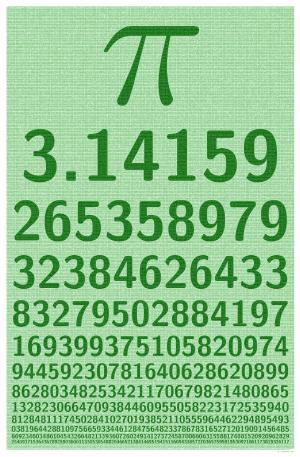The Greek alphabet is well-known. It has some famous letters, like Δ, which is the fourth letter, Σ, which replaces the Roman letter S, Epsilon, which was called the 'God's(Θεου) Letter' by the Ancient Greeks because of a giant Ε dedicated to the Greek god Apollo, and Φ(or φ), the fourth-last letter in the Greek Alphabet and the symbol for the 'Golden Ratio'.
However, this post is about the most famous letter, Pi. It is most like the Roman letter P(although the English P is more like the Ancient Greek letter Φ, because there is a slight aspiration at the end). It is used in the Ancient Greek word παδιον, which means small child. Its most common usage is a symbol for any perfect circle's diameter divided by its circumference.
Since thousands of years ago people have tried to figure out what the definition of Pi is. Back then, they didn't know that it was an irrational number. Babylonians, who were great mathematicians, thought Pi was exactly 25/8 or 3.125. Archimedes has calculated that;
3.142857142857143... > π > 3.140845070422535...
Which means that the first three digits of Pi are 3.14. In the middle ages, there were special methods for calculating Pi, and Jamshīd al-Kāshī, a Persian mathematician, calculated 17 digits.
The longest expansion of Pi before the computer was in 1873, when William Shanks spent over 20 years calculating 707 digits of Pi, although only 527 were correct.
In 1989 Pi was calculated to 1 billion decimal places by the supercomputer IBM 3090 using an infinite series.
The record is 13.3 trillion decimal places, calculated on the 8th of October, 2014.

No comments:
Post a Comment